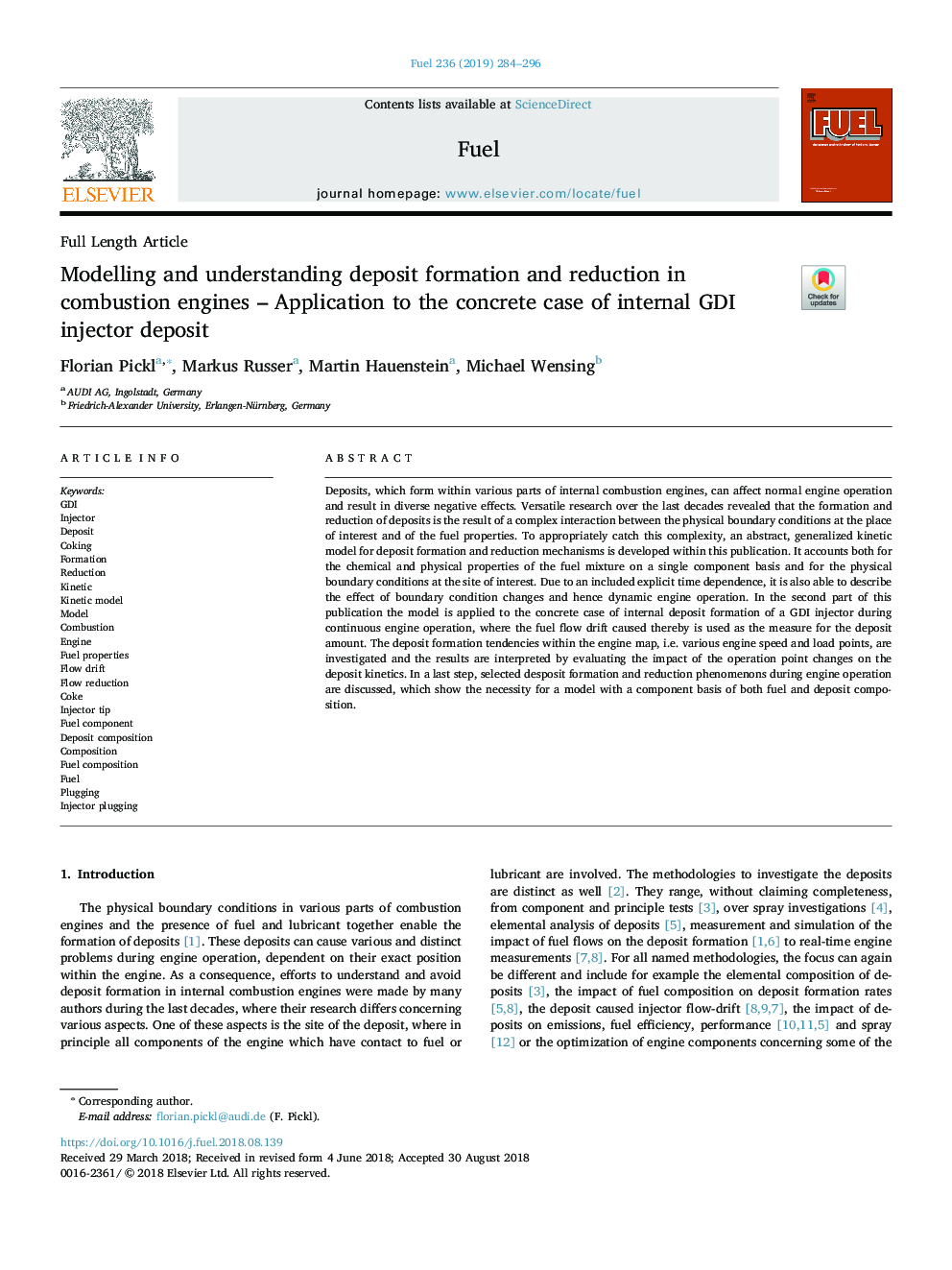| Article ID | Journal | Published Year | Pages | File Type |
|---|---|---|---|---|
| 10145402 | Fuel | 2019 | 13 Pages |
Abstract
Deposits, which form within various parts of internal combustion engines, can affect normal engine operation and result in diverse negative effects. Versatile research over the last decades revealed that the formation and reduction of deposits is the result of a complex interaction between the physical boundary conditions at the place of interest and of the fuel properties. To appropriately catch this complexity, an abstract, generalized kinetic model for deposit formation and reduction mechanisms is developed within this publication. It accounts both for the chemical and physical properties of the fuel mixture on a single component basis and for the physical boundary conditions at the site of interest. Due to an included explicit time dependence, it is also able to describe the effect of boundary condition changes and hence dynamic engine operation. In the second part of this publication the model is applied to the concrete case of internal deposit formation of a GDI injector during continuous engine operation, where the fuel flow drift caused thereby is used as the measure for the deposit amount. The deposit formation tendencies within the engine map, i.e. various engine speed and load points, are investigated and the results are interpreted by evaluating the impact of the operation point changes on the deposit kinetics. In a last step, selected desposit formation and reduction phenomenons during engine operation are discussed, which show the necessity for a model with a component basis of both fuel and deposit composition.
Keywords
Related Topics
Physical Sciences and Engineering
Chemical Engineering
Chemical Engineering (General)
Authors
Florian Pickl, Markus Russer, Martin Hauenstein, Michael Wensing,
